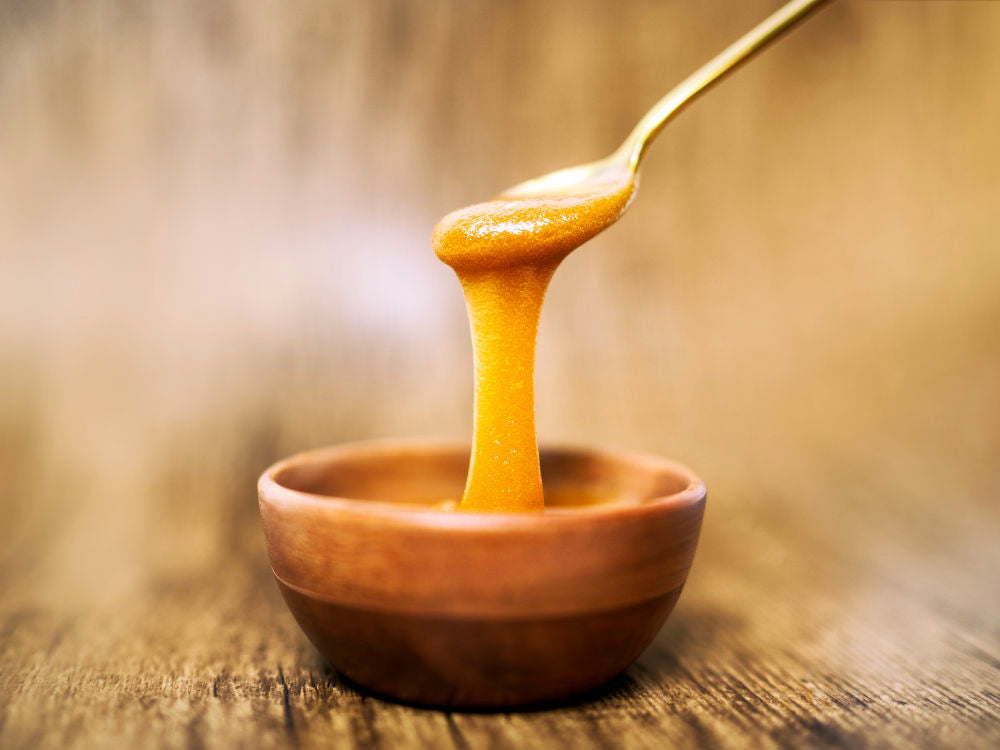Your basket is empty
Already have an account? Log in to check out faster.
Already have an account? Log in to check out faster.

That honey is a nutritious and beneficial food is a fact. But not all honey is the same: Manuka Honey, originating from New Zealand and Australia, is undoubtedly a true superfood thanks to its phytotherapeutic properties.
Its name derives from the Manuka plant, a shrub from the Myrtaceae family – an evergreen also used in cooking as an aromatic plant and to distill a fragrant essential oil – with flowers rich in pollen and nectar, and numerous medicinal qualities in its "active ingredient."
In fact, while its nutritional values may seem similar to common honey, Manuka honey is such an effective and versatile food that it has been used since ancient times in traditional Maori medicine and is still used today in natural pharmacology.
MGO or methylglyoxal is an organic compound from the aldehyde family, found only in this type of honey.
Only quality Manuka honey has a high enough concentration of this "active ingredient": the proportion in ml can vary from 100 to over 800 MGO per kg of honey, and obviously, higher concentrations correspond to a greater effect. Our NaturalePiù Manuka Honey ranges from 100+ to 800+ MGO and is 100% raw and natural, tested by qualified laboratories.
But what are the effects of this superfood? They are mainly anti-inflammatory, antibacterial, antiseptic, antiviral, antioxidant, and healing properties. We will see that it can be taken orally or used for skin compresses.
Some examples of conditions that can greatly benefit from the anti-inflammatory properties of Manuka honey are those affecting the digestive system: stomach ulcers, heartburn, and gastroesophageal reflux can find significant relief with daily consumption of this honey.
And not only that: even cold-related illnesses and all the symptoms of seasonal flu affecting the respiratory system, such as colds, sore throats, and coughs, can improve thanks to this natural remedy. It is indeed a great boost for the immune system and more: methylglyoxal interferes with the growth and proliferation of bacteria, blocking it with an action we could define as antibiotic. It appears to be active even against the infamous Staphylococcus aureus, which often resists traditional antibiotic drugs.
Even wounds, abrasions, skin ulcers, and burns can be treated with Manuka honey through the application of poultices and compresses.
The taste is extremely pleasant, sweet with a hint of a bitter aftertaste (a bit like chestnut honey), making it a more balanced and less cloying flavor than other types of honey.
Not only that, it is also very aromatic, with hints of heather and other herbaceous plants in the background.
The consistency makes it truly unique: the presence of a colloidal protein among its structural elements ensures that it is not liquid like many less prized types, but dense and full-bodied, with a changing golden color and a vaguely grainy texture.
A perfect consistency for many culinary preparations!
Who doesn't like a cup of tea, herbal tea, or warm milk with a teaspoon of honey on a cold evening? Manuka honey is certainly an excellent natural sweetener for any type of beverage.
To maximize its benefits, it is better to consume the honey in its pure form or in cold preparations: for example, on toast, pancakes, and toasted bread for an energizing breakfast, or added to delicious and colorful bowls of yogurt and fresh fruit.
It is even suitable for some savory preparations, for example, as a sweet note for exotic salad dressings.
Besides its culinary use, this versatile honey also has external uses.
Wounds and abrasions can be bandaged with a Manuka honey compress, capable of cleaning the affected area, generating an antiseptic action, and promoting the regeneration of healthy tissues.
Just brush the cut or burn with this honey and then proceed with a normal bandage with sterile gauze: even the pain will gradually diminish thanks to the soothing properties of the product.
Of course, there are some contraindications, although very limited, as it is a completely natural product: specific allergic reactions, hyperglycemia in overdose in diabetic patients, and possible interaction, always if taken in excessive quantities, with some drugs like anticoagulants. Moreover, with its approximately 320Kcal per 100g of product, it is certainly an energetic food: it should not, therefore, be consumed in large doses in the context of weight-loss diets or in the case of problems related to overweight and obesity.
For further insights, here are some international sources from two institutions, the New Zealand Government and the Australian Manuka Honey Association, committed to spreading information about this particular product:
https://www.mpi.govt.nz/growing-and-harvesting/honey-and-bees/manuka-honey/ https://www.manukaaustralia.org.au/quality-standards/criteria/
Water, Lemon, Ginger, and Manuka Honey
Preparation Time: ~20 min
Ingredients
40 grams of ginger, cleaned and peeled
2 tablespoons of Manuka Honey MG100+
1 liter of water
Juice of one organic lemon
Preparation
Heat the water with finely chopped ginger and cook for about 15 minutes.
Remove from heat and add Manuka Honey MG100+, stirring with a spoon until dissolved.
Place in a pitcher, straining with a sieve or gauze, and finally add the lemon juice.
0 comments